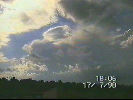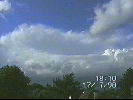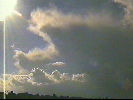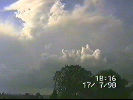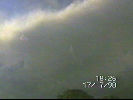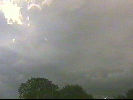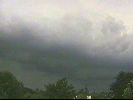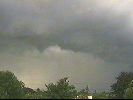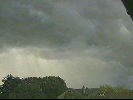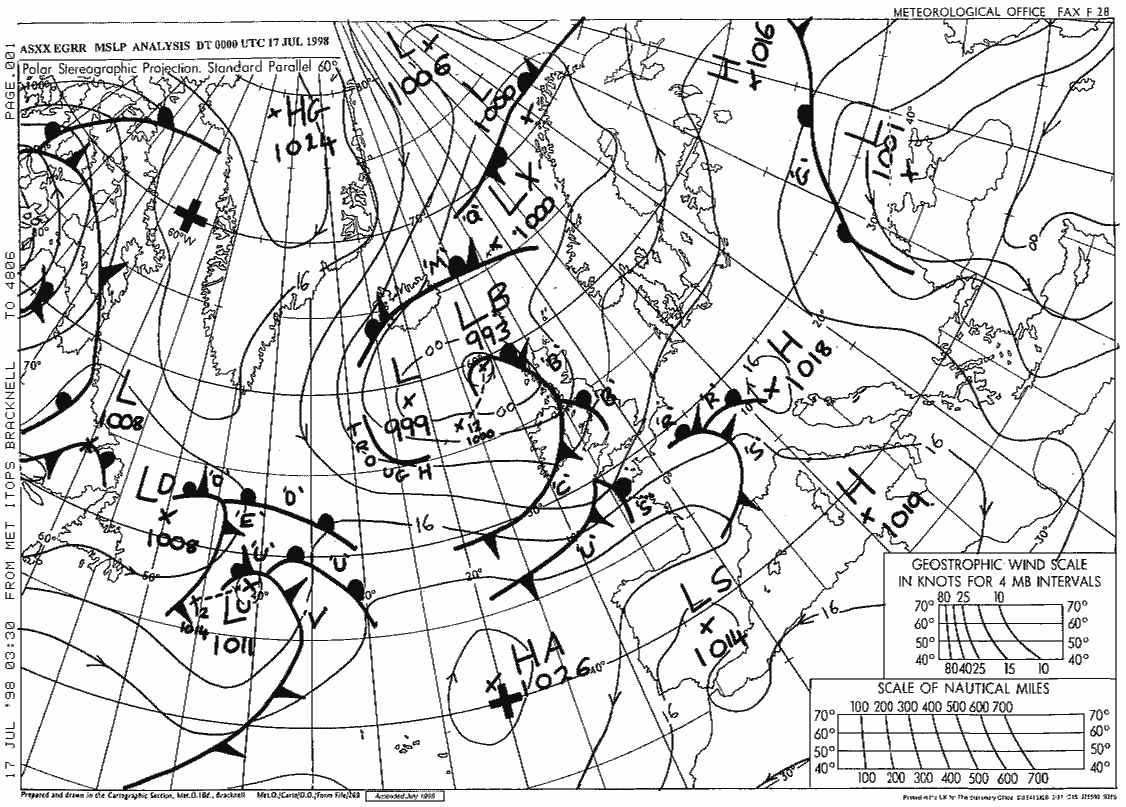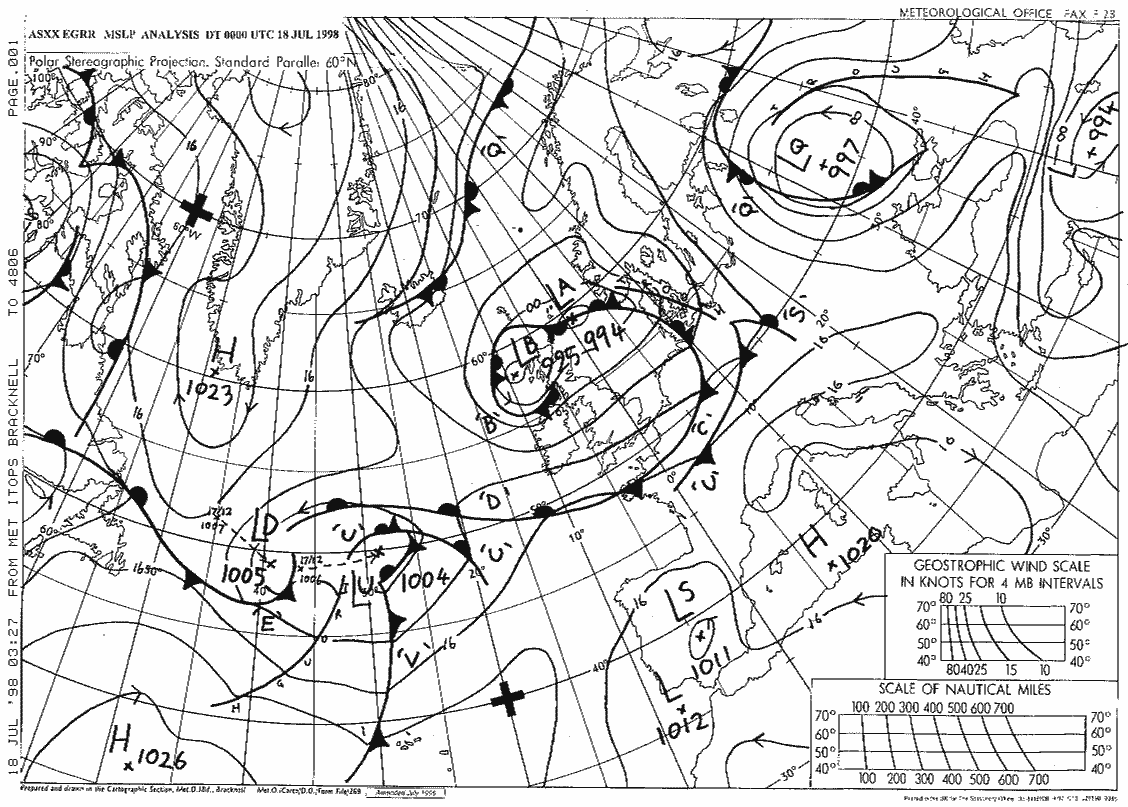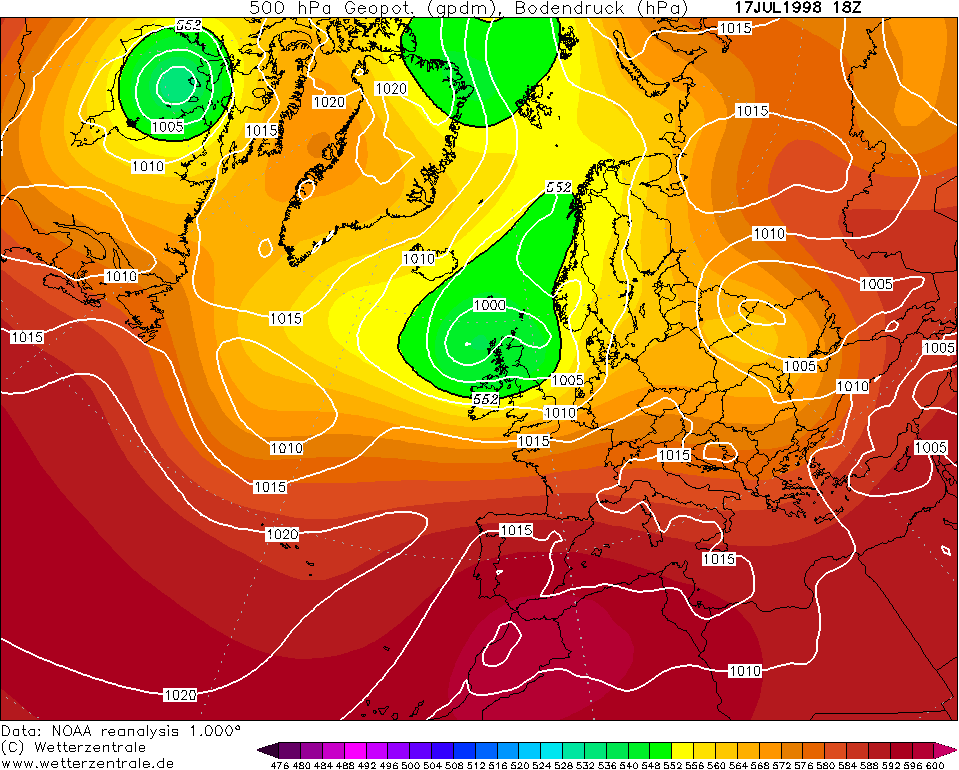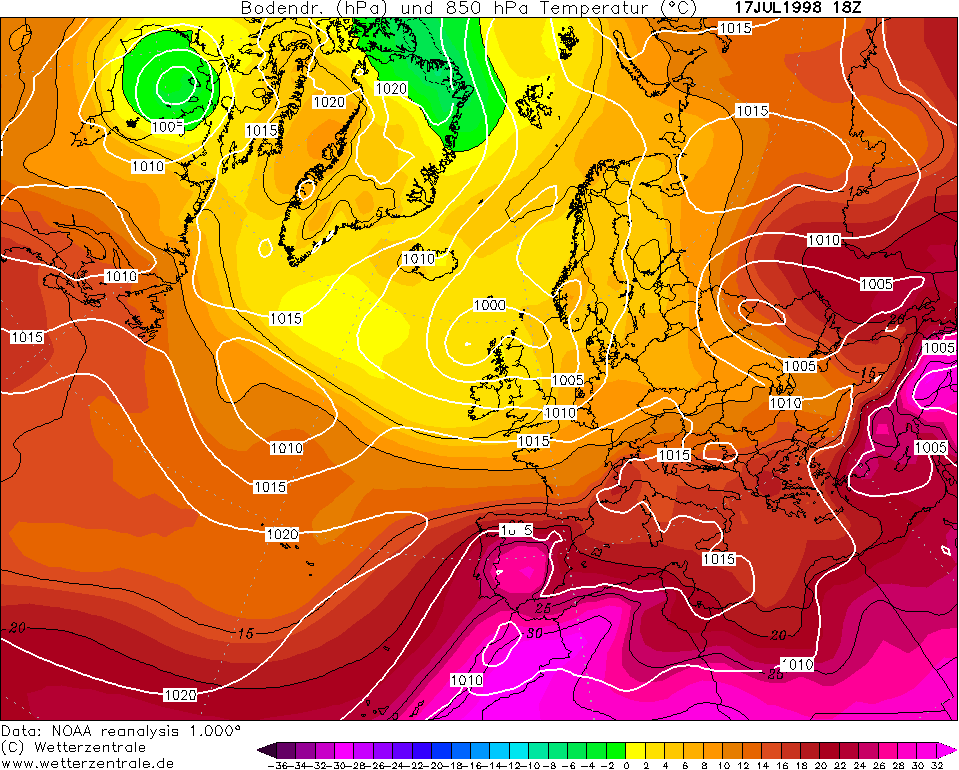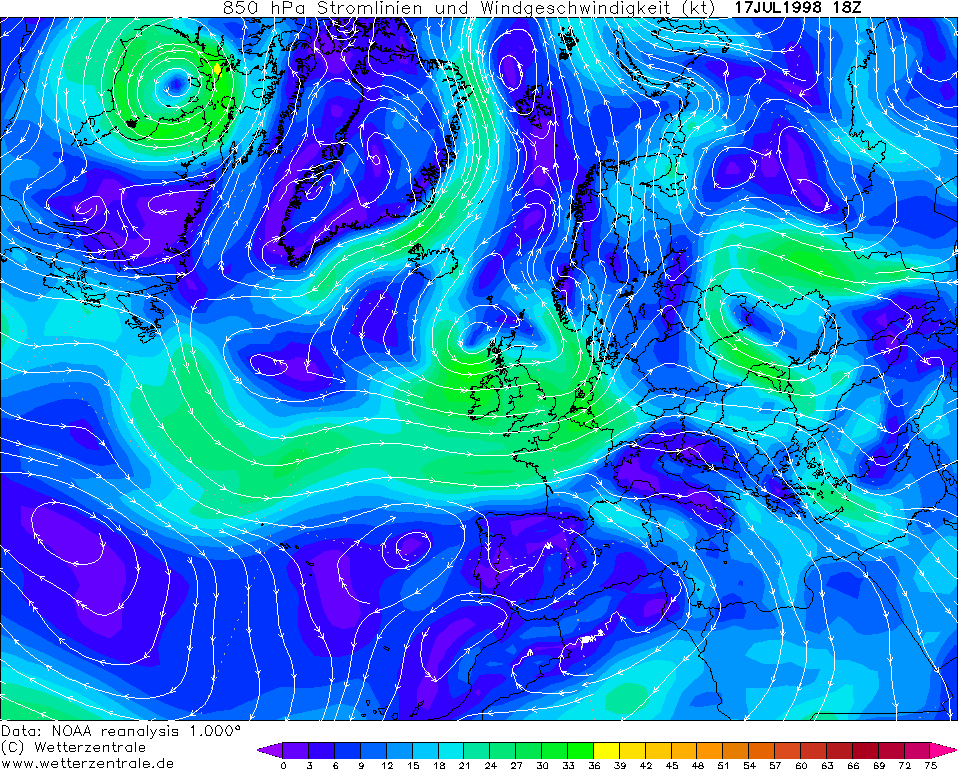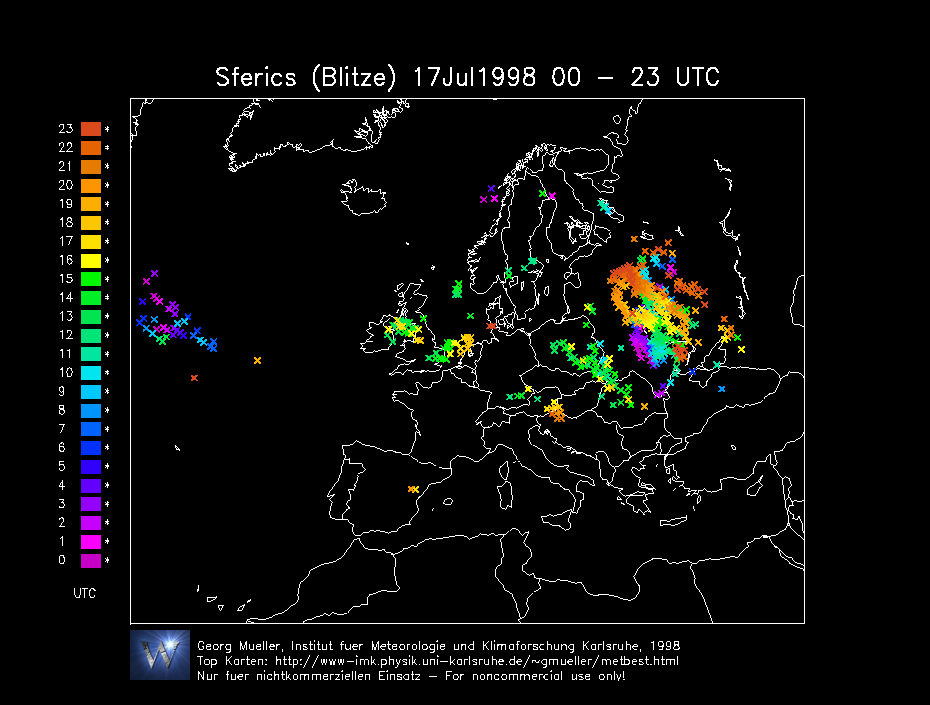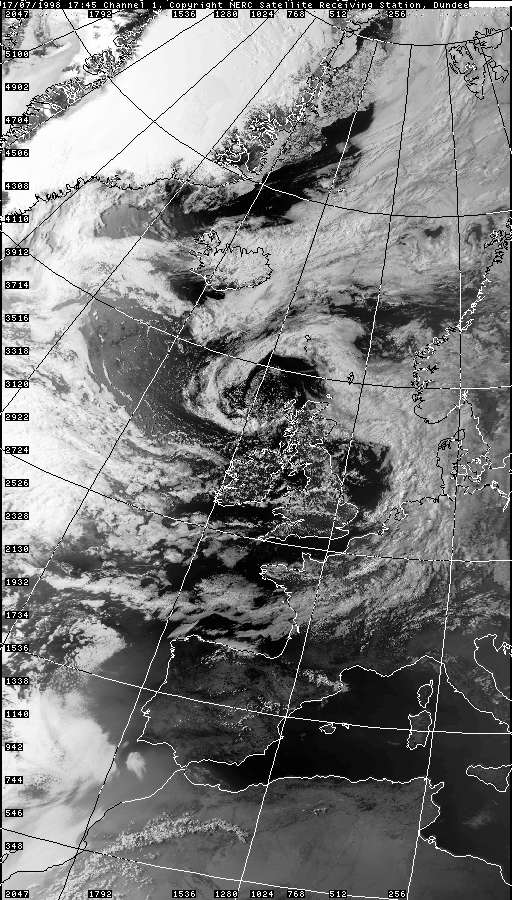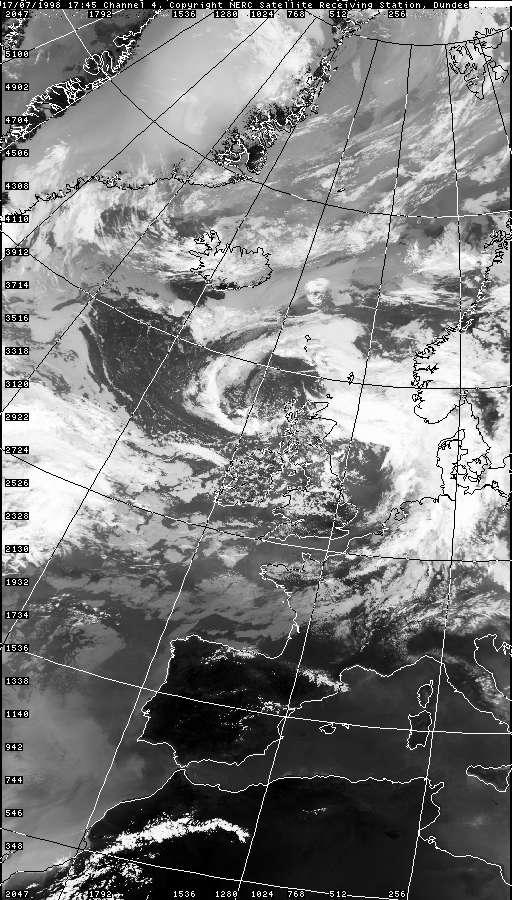![]()
|
THUNDERSTORM T0017 As T0016 and a few other cells trundled over the hills, a very large but still pretty weak cell followed in from the ENE. These storms were all forming in a convergence line (like a daisy chain) in line with the polar maritime flow. It appeared initially to have strong development and a well-defined large mushroomed anvil. Although the cell was about 5-7 miles north from Macclesfield, the anvil was almost overhanging overhead. As it passed by, distant thunders were heard amongst the daytime noise pollution. Only 2 discharges were captured on camera during it's passing; the first was a C-G strike in the far bottom-right of the screen. At the time I was filming the arc of towers in hope of videoing the cell lighting up like a bulb, or capturing a large positive flash strike from the anvil to the ground, and hence why I wasn’t including the cloud base in the frame. The second discharge was a C-C discharge which was fully caught on camera. Both discharges were very bright considering they occurred during the daytime at more than 5 miles distance. After the cell rolled over the Pennines the daisy chain eventually swept over Macclesfield in the form of electrically-inactive cells with heavy rain and bubbly updraught bases.
|
© Mark Seltzer
www.electricsky.co.uk

